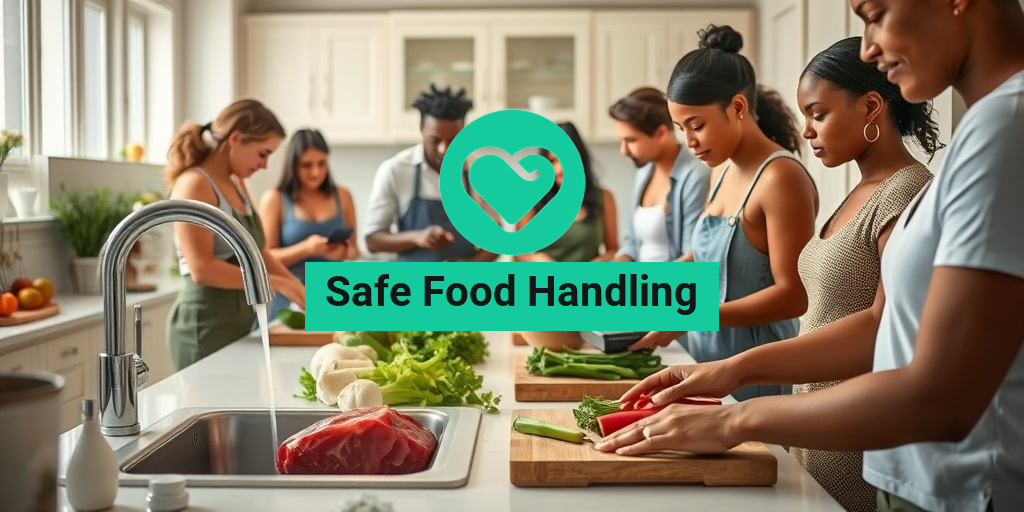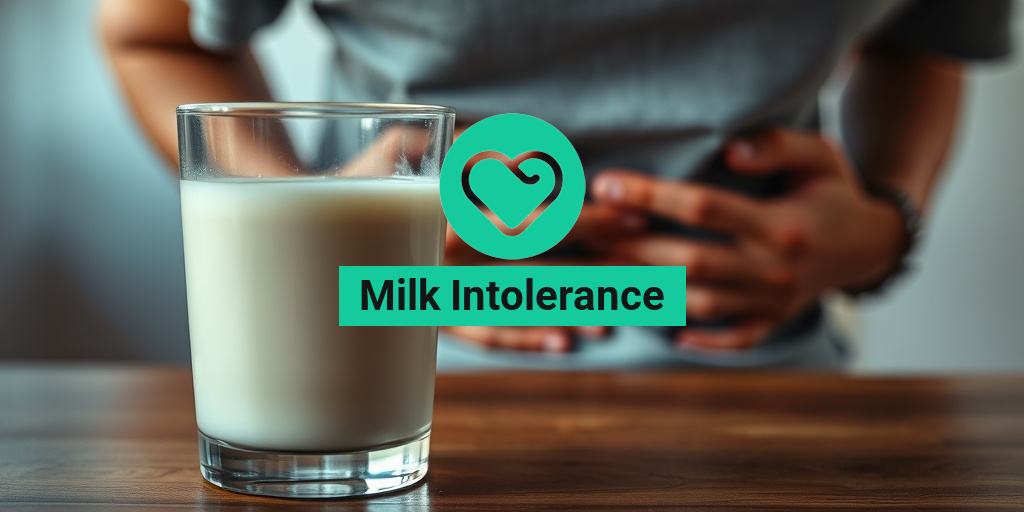What Is Safe Food Handling?
Safe food handling refers to the practices and procedures that ensure food is prepared, cooked, and stored in a way that minimizes the risk of foodborne illnesses. This involves a series of steps that food handlers must follow to maintain hygiene and safety throughout the food preparation process. From the moment food is sourced to the time it reaches your plate, safe food handling is crucial in preventing contamination and ensuring that the food we consume is safe.
Key Principles of Safe Food Handling
Understanding the key principles of safe food handling can help both individuals and food service professionals maintain high standards of food safety. Here are some essential practices:
- Cleanliness: Always wash your hands, utensils, and surfaces before and after handling food. This helps eliminate harmful bacteria.
- Separation: Keep raw and cooked foods separate to avoid cross-contamination. Use different cutting boards for meats and vegetables.
- Cooking: Cook food to the appropriate temperatures to kill harmful pathogens. Use a food thermometer to ensure accuracy.
- Chilling: Refrigerate perishable foods promptly and keep your refrigerator at 40°F (4°C) or below to slow bacterial growth.
By adhering to these principles, you can significantly reduce the risk of foodborne illnesses, which affect millions of people each year. For those looking to deepen their knowledge, obtaining a safe food handling certificate can be a valuable step in mastering these practices.
Importance of Safe Food Handling
The importance of safe food handling cannot be overstated. It plays a vital role in public health and safety, impacting both individuals and communities. Here are several reasons why safe food handling is essential:
Preventing Foodborne Illnesses
Foodborne illnesses are caused by consuming contaminated food or beverages. According to the Centers for Disease Control and Prevention (CDC), approximately 48 million people in the United States get sick from foodborne diseases each year. By practicing safe food handling, you can significantly reduce the risk of these illnesses. This is especially important for vulnerable populations, such as children, the elderly, and those with weakened immune systems.
Enhancing Food Quality
Safe food handling not only protects health but also enhances the quality of food. Proper handling techniques help maintain the flavor, texture, and nutritional value of food. For instance, cooking food to the right temperature ensures that it is not only safe to eat but also delicious!
Building Consumer Trust
For businesses in the food industry, adhering to safe food handling practices is crucial for building consumer trust. Customers are more likely to return to establishments that prioritize food safety. Obtaining a safe food handling certificate can demonstrate a commitment to quality and safety, making your business more appealing to health-conscious consumers.
Legal Compliance
Many regions have regulations in place regarding food safety. By following safe food handling practices, businesses can ensure compliance with local health codes and avoid potential legal issues. This is particularly relevant for those seeking a safe food handling certificate in Ontario, New South Wales, or Western Australia, where specific training may be required.
Resources for Safe Food Handling
For those interested in learning more about safe food handling, numerous resources are available. Websites like Yesil Health AI provide evidence-based health answers and can guide you in understanding safe food handling practices. Additionally, many local health departments offer courses and certifications that can enhance your knowledge and skills.
In conclusion, safe food handling is a fundamental aspect of food safety that everyone should prioritize. Whether you are a home cook or a food service professional, understanding and implementing safe food handling practices can protect your health and the health of others. Remember, a little knowledge goes a long way in ensuring that the food we eat is safe and enjoyable! 🍽️

Common Foodborne Illnesses
Foodborne illnesses are a significant public health concern, affecting millions of people each year. Understanding the common types of foodborne illnesses can help you take the necessary precautions to ensure safe food handling in your kitchen. Here are some of the most prevalent foodborne illnesses:
1. Salmonella
Salmonella is one of the most common causes of food poisoning. It is often found in raw or undercooked eggs, poultry, and meat. Symptoms typically include:
- Diarrhea
- Fever
- Abdominal cramps
- Nausea
To prevent salmonella infections, always cook food to the appropriate temperatures and avoid cross-contamination.
2. E. coli
Escherichia coli (E. coli) can be found in undercooked beef, unpasteurized milk, and contaminated water. Some strains can cause severe illness, leading to:
- Severe stomach cramps
- Diarrhea (often bloody)
- Vomiting
To reduce the risk of E. coli, ensure that ground beef is cooked to an internal temperature of at least 160°F (71°C).
3. Listeria
Listeria is particularly dangerous for pregnant women, newborns, and individuals with weakened immune systems. It can be found in deli meats, unpasteurized dairy products, and ready-to-eat foods. Symptoms may include:
- Fever
- Muscle aches
- Nausea
To prevent listeria infections, always heat deli meats and avoid unpasteurized dairy products.
4. Norovirus
Norovirus is highly contagious and can spread through contaminated food, surfaces, or water. Symptoms often include:
- Vomiting
- Diarrhea
- Stomach pain
Good hygiene practices, such as washing hands frequently, are essential in preventing norovirus outbreaks.
5. Clostridium perfringens
This bacterium is commonly found in large quantities of food that are kept warm for long periods, such as buffets. Symptoms include:
- Diarrhea
- Abdominal cramps
To avoid this illness, ensure that food is kept at safe temperatures and consumed promptly.
Safe Food Storage Practices
Proper food storage is crucial for maintaining the safety and quality of your food. Here are some essential safe food handling practices to keep in mind:
1. Understand Temperature Zones
Food should be stored at the right temperatures to prevent bacterial growth. The danger zone for food is between 40°F (4°C) and 140°F (60°C). Here’s how to manage temperature zones:
- Refrigerate: Keep perishable foods at or below 40°F (4°C).
- Freeze: Store food at 0°F (-18°C) or lower.
- Cook: Ensure foods are cooked to safe internal temperatures.
2. Use Airtight Containers
Storing food in airtight containers helps to keep it fresh and prevents contamination. Consider using:
- Glass containers with tight-fitting lids
- Plastic containers labeled as BPA-free
- Vacuum-sealed bags for long-term storage
3. Label and Date Your Food
Labeling and dating your food can help you keep track of freshness. Use a permanent marker or labels to note:
- The date of storage
- The type of food
This practice can help reduce food waste and ensure that you consume items before they spoil.
4. Follow FIFO (First In, First Out)
To minimize spoilage, practice the FIFO method. This means using older items before newer ones. Organize your pantry and refrigerator so that:
- Older items are at the front
- Newer items are placed at the back
5. Regularly Check Expiration Dates
Make it a habit to check expiration dates on food products regularly. Discard any items that are past their expiration date to avoid foodborne illnesses. 🗑️
By implementing these safe food storage practices, you can significantly reduce the risk of foodborne illnesses and ensure that your meals are both safe and delicious! 🍽️

Proper Cooking Temperatures
When it comes to safe food handling, understanding proper cooking temperatures is crucial. Cooking food to the right temperature not only enhances flavor but also ensures that harmful bacteria are killed, making your meals safe to eat. Here’s a breakdown of the essential cooking temperatures for various types of food.
Meat and Poultry
- Poultry (chicken, turkey, duck): Cook to an internal temperature of 165°F (74°C). This temperature is vital to eliminate pathogens like Salmonella.
- Ground meats (beef, pork, lamb): Ensure these reach at least 160°F (71°C) to kill any harmful bacteria.
- Steaks, roasts, and chops: Cook to a minimum of 145°F (63°C) and allow a rest time of at least 3 minutes before carving or consuming.
Seafood
Seafood is another category where proper cooking temperatures are essential. Fish should be cooked to an internal temperature of 145°F (63°C). When cooking shellfish, such as shrimp and lobster, ensure they are cooked until they are opaque and firm.
Eggs and Egg Dishes
Eggs should be cooked until both the yolk and white are firm. For dishes containing eggs, such as casseroles, the internal temperature should reach 160°F (71°C) to ensure safety.
Leftovers and Casseroles
When reheating leftovers, make sure they reach an internal temperature of 165°F (74°C). This is crucial for eliminating any bacteria that may have developed during storage.
Using a Food Thermometer
To accurately measure cooking temperatures, invest in a reliable food thermometer. This tool is essential for ensuring that your food is cooked safely. Insert the thermometer into the thickest part of the food, avoiding bones, to get an accurate reading.
Cross-Contamination Prevention
Cross-contamination is a significant risk in the kitchen and can lead to foodborne illnesses. It occurs when harmful bacteria from one food item transfer to another, often through improper handling or storage. Here are some effective strategies to prevent cross-contamination.
Separate Raw and Cooked Foods
Always keep raw foods, especially meats, separate from cooked foods. Use different cutting boards for raw meats and vegetables to avoid any transfer of bacteria. Consider using color-coded cutting boards to make this practice easier and more intuitive.
Proper Storage Techniques
- Store raw meats: Keep them on the bottom shelf of the refrigerator to prevent juices from dripping onto other foods.
- Use airtight containers: Store leftovers and prepared foods in airtight containers to minimize the risk of contamination.
Hand Hygiene
Washing your hands is one of the simplest yet most effective ways to prevent cross-contamination. Always wash your hands with soap and water for at least 20 seconds before and after handling food, especially raw meat and poultry. Don’t forget to wash your hands after using the restroom or touching pets! 🧼
Cleaning Surfaces and Utensils
Regularly clean and sanitize kitchen surfaces, utensils, and equipment. Use hot, soapy water for cleaning, and consider using a sanitizing solution for surfaces that come into contact with raw foods. This practice helps eliminate bacteria and keeps your kitchen safe.
Educate Yourself and Others
Consider taking a safe food handling course to deepen your understanding of food safety practices. Many organizations offer online courses that provide valuable information on safe food handling and storage of food. Obtaining a safe food handling certificate can also enhance your skills and knowledge in this area.
By implementing these safe food handling practices, you can significantly reduce the risk of foodborne illnesses and ensure that your meals are not only delicious but also safe for you and your loved ones. 🍽️

Cleaning and Sanitizing Techniques
When it comes to safe food handling, one of the most crucial aspects is maintaining a clean and sanitized environment. Proper cleaning and sanitizing techniques not only help prevent foodborne illnesses but also ensure that your food remains safe and delicious. Let’s dive into the essential steps and methods for effective cleaning and sanitizing.
Understanding the Difference: Cleaning vs. Sanitizing
Before we explore the techniques, it’s important to understand the difference between cleaning and sanitizing:
- Cleaning involves removing dirt, food particles, and impurities from surfaces. This can be done using soap, water, and scrubbing.
- Sanitizing reduces the number of germs on surfaces to a safe level, typically using chemical solutions or heat.
Essential Cleaning Supplies
To effectively clean and sanitize your kitchen, you’ll need the right supplies. Here’s a list of essential items:
- Dish soap: A good quality dish soap is vital for cleaning surfaces and utensils.
- Sponges and scrubbers: Use non-abrasive sponges to avoid scratching surfaces.
- Sanitizing solution: This can be a commercial sanitizer or a homemade solution (like a mixture of water and bleach).
- Microfiber cloths: These are great for wiping down surfaces without leaving lint behind.
- Gloves: Protect your hands while cleaning and sanitizing.
Step-by-Step Cleaning Process
Follow these steps to ensure your kitchen is clean and safe:
- Clear the Area: Remove all items from the surfaces you plan to clean.
- Wash Surfaces: Use warm, soapy water to scrub surfaces, including countertops, cutting boards, and utensils.
- Rinse Thoroughly: Rinse off any soap residue with clean water.
- Apply Sanitizer: Use a sanitizing solution according to the manufacturer’s instructions. Ensure the surface remains wet for the recommended contact time.
- Allow to Air Dry: Let surfaces air dry to ensure maximum effectiveness of the sanitizer.
Best Practices for Cleaning
To maintain a safe food handling environment, consider these best practices:
- Clean as You Go: Regularly clean surfaces and utensils while cooking to prevent cross-contamination.
- Use Separate Cutting Boards: Designate specific boards for raw meats and vegetables to avoid cross-contamination.
- Regularly Wash Hands: Always wash your hands before and after handling food, especially raw ingredients.
Safe Food Handling for Events
Planning an event? Whether it’s a small gathering or a large celebration, safe food handling is essential to ensure the health and safety of your guests. Here are some key considerations to keep in mind when preparing food for events.
Food Preparation and Storage
Proper food preparation and storage are critical for preventing foodborne illnesses:
- Plan Ahead: Prepare a menu that allows for safe food handling. Choose dishes that can be made in advance and stored safely.
- Keep Food at Safe Temperatures: Maintain hot foods at 140°F (60°C) or above and cold foods at 40°F (4°C) or below.
- Use Ice for Cold Foods: If serving items like salads or seafood, keep them on ice to maintain a safe temperature.
Serving Food Safely
When it comes to serving food, follow these guidelines:
- Use Clean Utensils: Always use clean serving utensils to prevent contamination.
- Limit Exposure: Keep food covered until it’s time to serve to minimize exposure to contaminants.
- Monitor Food Temperature: Use food thermometers to ensure that hot foods remain hot and cold foods remain cold.
Post-Event Food Safety
After the event, it’s important to handle leftovers properly:
- Refrigerate Promptly: Store leftovers in the refrigerator within two hours of serving.
- Label and Date: Clearly label containers with the date to keep track of freshness.
- Reheat Safely: When reheating leftovers, ensure they reach an internal temperature of 165°F (74°C).
By following these safe food handling practices, you can ensure that your event is not only enjoyable but also safe for all your guests! 🎉

Frequently Asked Questions about Safe Food Handling
What is Safe Food Handling?
Safe food handling refers to the practices and procedures that ensure food is prepared, cooked, and stored in a way that prevents foodborne illnesses. This includes proper hygiene, cooking temperatures, and storage methods.
Why is Safe Food Handling Important?
Practicing safe food handling is crucial to prevent foodborne illnesses, which can lead to serious health issues. By following these practices, you can protect yourself and others from harmful bacteria and viruses.
What are the Basic Principles of Safe Food Handling?
- Clean: Always wash your hands, utensils, and surfaces before handling food.
- Separate: Keep raw and cooked foods separate to avoid cross-contamination.
- Cook: Ensure food is cooked to the appropriate temperature to kill harmful pathogens.
- Chill: Store food at safe temperatures to prevent bacterial growth.
How Can I Obtain a Safe Food Handling Certificate?
You can obtain a safe food handling certificate by completing a recognized course. Many organizations offer safe food handling courses online or in-person, which often include a final exam to assess your knowledge.
Are There Online Courses for Safe Food Handling?
Yes, there are many safe food handling courses online that provide comprehensive training. These courses often include interactive modules and quizzes to help reinforce your understanding of safe practices.
What Should I Do If I Suspect Food Contamination?
If you suspect food contamination, it is important to discard the food immediately. Additionally, clean any surfaces or utensils that may have come into contact with the contaminated food to prevent further spread.
How Can I Ensure Safe Food Storage?
To ensure safe food handling and storage of food, always store perishable items in the refrigerator or freezer, keep your pantry organized, and regularly check expiration dates. Use airtight containers to keep food fresh and prevent contamination.
What Are Common Mistakes in Safe Food Handling?
- Not washing hands before food preparation.
- Using the same cutting board for raw meat and vegetables.
- Not cooking food to the recommended internal temperature.
- Leaving food out at room temperature for too long.
Where Can I Find More Resources on Safe Food Handling?
Many health organizations and government websites provide resources on safe food handling. You can also find informative materials, including safe food handling PPT presentations, to help educate yourself and others.




